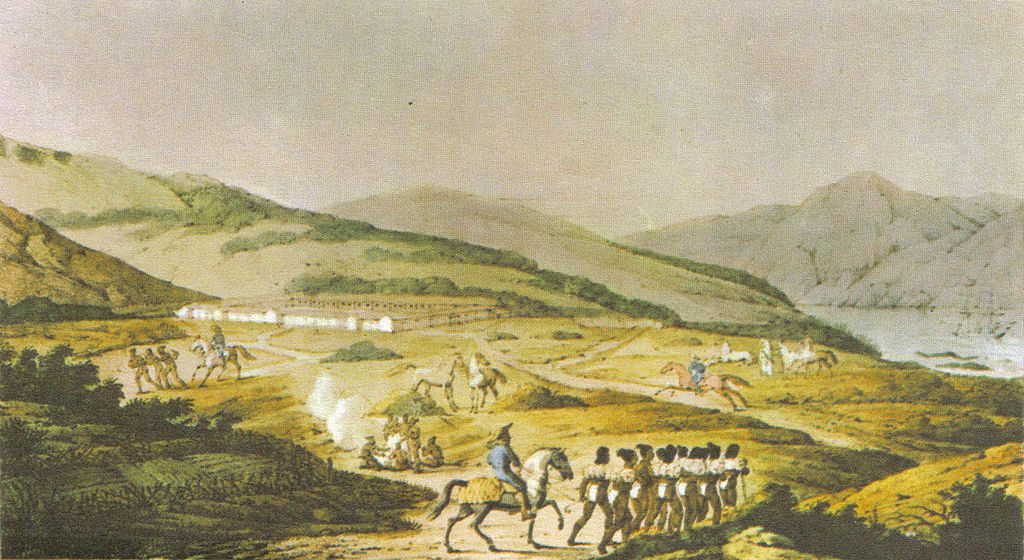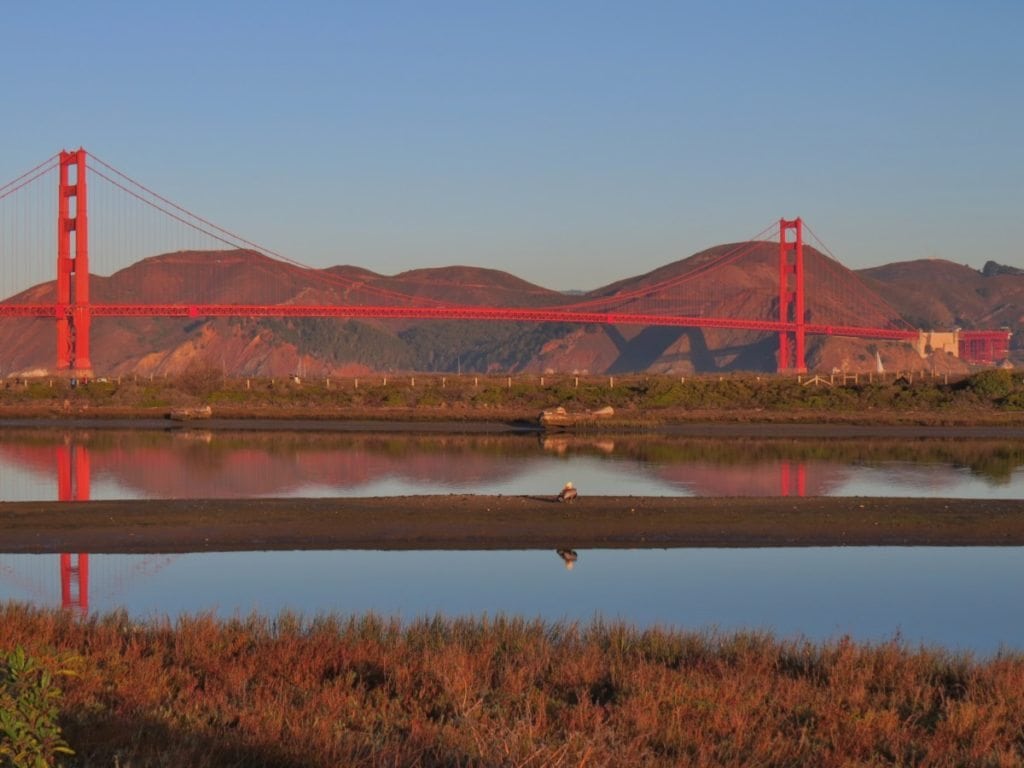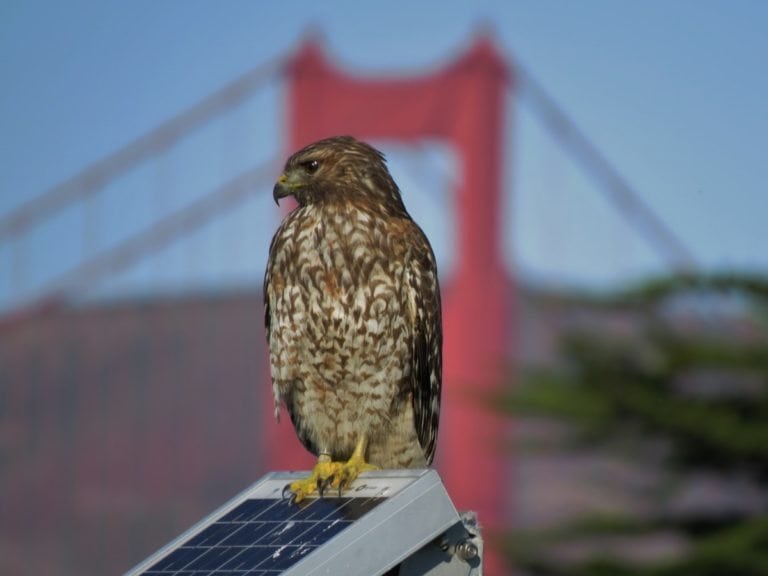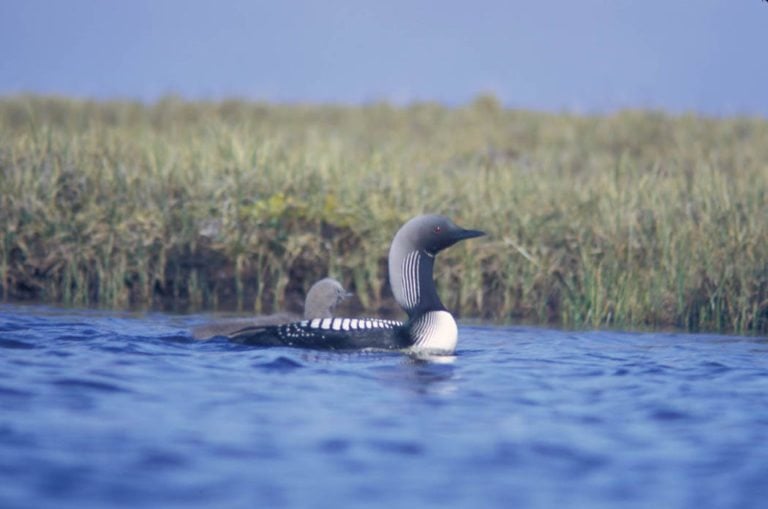Crissy Lagoon: Birding Hotspot
By David Assmann
Crissy Field Lagoon at dawn on a sunny day is the epitome of tranquility – herons and egrets feeding in a pristine lagoon with the Golden Gate Bridge perched majestically in the background. Seeing this birding jewel today, it can be hard to visualize its many previous incarnations, which included time as a military installation, a livestock display area, and a hazardous waste dump.
Prior to the arrival of Spanish settlers in 1776, what is now Crissy Field and Lagoon in San Francisco was a 130-acre salt marsh and estuary. The Ohlone lived in seasonal camps in the area, harvesting shellfish and fish from the marsh. Bird life was abundant. The Spanish, led by Captain Juan Bautista de Anza, established a military post to defend Spain’s claim to San Francisco Bay and called it El Presidio Real de San Francisco (“the royal garrison of Saint Francis”). They removed native vegetation, planted crops, and grazed livestock.
 The Presidio in 1817 by Louis Choris
The Presidio in 1817 by Louis Choris
When the U.S. Army arrived in 1846, it maintained the Presidio as a military installation, complete with refuse dumps. The tidal sloughs were filled in 1912 so that the area could be used as a Grand Prix racetrack in advance of the 1915 Panama Pacific International Exposition. During the exhibition, the site of the lagoon was used for livestock exhibits for the fair. In 1921, an airfield was built on Crissy Field.
Over time, the Presidio gradually lost its utility as a military base. The airfield was closed in 1974, and in 1989 Congress voted to close the entire base. The Presidio was formally transferred to the National Park Service in 1994, and shortly thereafter the transformation back to a more natural state began.
 Planes lined up at Crissy Field in the 1920s / Wikipedia
Planes lined up at Crissy Field in the 1920s / Wikipedia
 Crissy Lagoon today / Photo by David Assmann
Crissy Lagoon today / Photo by David Assmann
Converting a former military installation to a pristine park involved raising millions of dollars, removing thousands of tons of debris, and planting more than 100,000 native plants. Golden Gate Bird Alliance played a role in the restoration as one of the key environmental groups consulted in developing the environmental assessment for the restoration.
Today the 18-acre Crissy Field Lagoon provides a rich habitat for shorebirds, wading birds, and ducks. It has its own seasonal rhythm, as regular as the tidal flows, but on a different time scale. The summer is the slow season on the lagoon, but there are still plenty of birds.…



 2016 Gwich’in Gathering in Arctic Village, Alaska / Photo by Susan Culliney
2016 Gwich’in Gathering in Arctic Village, Alaska / Photo by Susan Culliney
 Boats docked at Arctic Village, on the edge of the Arctic National Wildlife Refuge / Photo by Susan Culliney
Boats docked at Arctic Village, on the edge of the Arctic National Wildlife Refuge / Photo by Susan Culliney